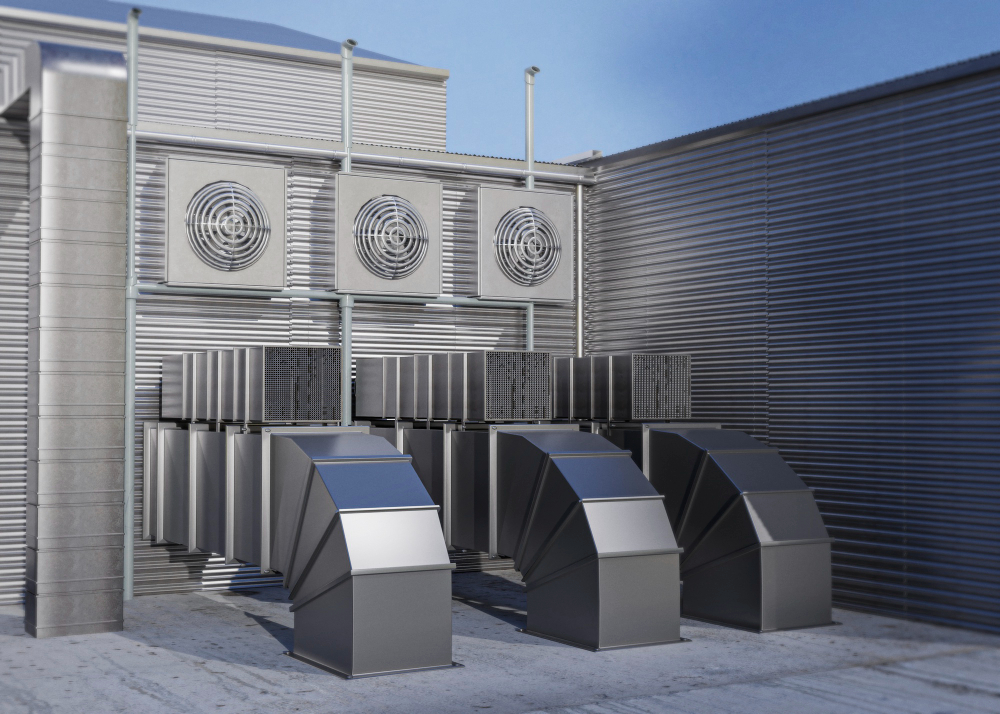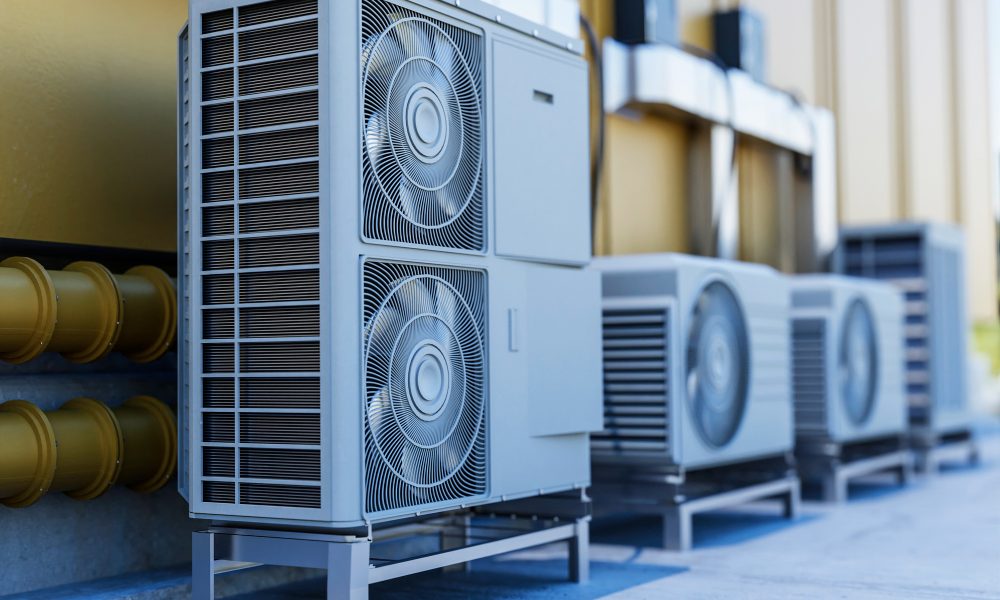Scotland’s weather can be harsh and unforgiving, with long, cold winters making heating an essential part of everyday life. With this in mind, it’s no surprise that more and more Scottish homeowners are turning to air source heating systems to keep their homes warm. These innovative systems can help to reduce energy bills and carbon emissions, making them an attractive option for those looking to reduce their environmental impact. In this blog, we will explore the benefits of air source heating in Scotland and why it’s becoming an increasingly popular choice for homeowners in the region.
Air source heat pumps can produce two to three units of heat for every watt of electricity they consume, making them an efficient option suitable for new-build homes, retrofit add-ons, and ductless “mini split” installations.
These heat pump installations require only an outdoor compressor or condenser and an indoor ducted or ductless air handling unit for installation, making the process less disruptive than ground-source heat pumps that necessitate excavation work.
Whether you’re looking for a more sustainable way to heat your home, or simply want to save money on your energy bills, this blog is for you. If you’re interested in learning more about this innovative technology, keep reading!
Efficient

Air source heating in Scotland is highly energy-efficient and the heat pumps produce three times more heating energy than they consume with electricity. Their efficiency stems from not converting any fuel but instead just moving heat around. Plus, they have long lifespans and durable construction, which makes them a sound investment!
Air-source heat pumps can harness thermal energy from even very cold environments by using the same mechanism that air conditioners do – vapor compression refrigeration – when cooling mode is switched on, but then switched back off when switching into heating mode, allowing them to absorb warmth from their surroundings and move it into homes at an astoundingly rapid rate – up to coefficient of performance 4.
High-efficiency heat pumps are also very durable, lasting for 20 years without needing much maintenance. Furthermore, their lower carbon footprint than most heating systems results in savings for homeowners as well as reduced environmental impacts.
To maximize ASHP performance, your home must be properly insulated to achieve high levels of performance. This may involve installing loft insulation, wall insulation, and draft-proofing measures in order to achieve energy efficiency and maximum effectiveness. In the UK, standard domestic ASHPs can extract useful heat down to temperatures around 0°C; after this point, their efficiency begins to decline, although cold-climate models exist that will continue to operate optimally even below freezing temperatures.
According to your needs and budget, different types of air-source heat pumps (ASHPs) may be available. Ducted air-source heat pumps are among the most popular, as they use air ducts to deliver heated air throughout a home or building. They’re frequently seen on both new construction projects and existing homes with existing ductwork. Meanwhile, single-zone ASHPs may be ideal for applications like garages or workshops as they only require one outdoor condenser unit and one indoor evaporator head in order to operate efficiently.
Renewable

Air contains significant energy from sources such as the sun and other sources of heat in our environment, much of it coming from solar radiation and other heat sources in the atmosphere. While most of this heat energy radiates away into space, some remains hidden in the air, and an air-source heat pump system captures it and moves it where it’s needed within buildings, acting similarly to refrigerators or air conditioners in terms of principle and operation.
Air source heat pumps in Scotland powered by electricity produce almost zero greenhouse gas emissions; however, ASHPs need additional heating in very cold temperatures so they cannot provide all of a building’s heating needs alone. When combined with renewable energy sources such as solar PV or wind farms, however, ASHPs provide zero-carbon space heating that helps the US meet its decarbonisation goals.
An outside unit usually containing a fan draws ambient air through a heat exchanger that functions similarly to an air conditioning condenser, where liquid refrigerant absorbs any available heat in the form of refrigerants and pumps it directly into your house, where it warms air or water distributed through the building’s thermal systems or even domestic washing machines. Air source heating in Scotland is capable of producing hot water that can also be used for other purposes, such as washing machines.
Most air source heating in Scotland are rated to work outdoors up to 40 degrees Fahrenheit; some manufacturers also provide systems capable of operating at higher temperature ranges. As temperatures become colder, ASHP systems must work harder to extract the energy needed by their users, making it important that your ASHP is placed above ground level and protected from extreme cold conditions.
Small air source heat pump output may qualify for Alternative Energy Credits (AECs) under the APS Alternative Energy Portfolio Standard, depending on its metered production and installation in an existing building. To learn more, refer to the AEC Regulations, Guidelines on Metering and Calculations for Small and Intermediate Generation Units or Statement of Qualification page for details.
Affordable
Air source heat pumps can be an economical choice in most climates, whether replacing an older electric resistance heating system or building a home with ductwork that needs primary heating services, and they may even be cheaper than alternatives such as geothermal or solar solutions.
These systems use outdoor air to quickly warm a home in the winter and cool it during the summer, similar to air conditioners but more efficiently thanks to a higher energy efficiency rating, meaning you could reduce energy bills by as much as 50 percent when used as a primary heating system.
Installation costs for an ASHP are comparable to other heating technologies; however, due to its reliance on electricity for operation, you may end up spending more money on energy (and utility) bills if electricity prices in your region are higher than the fossil fuels you were using previously.
For optimal performance in cold environments, an air-source heat pump system designed for your environment is key to ensuring peak performance. Although ASHPs tend to perform slightly less effectively when temperatures drop below 0 degrees Celsius, they still make for an energy-saving choice when combined with insulation or more energy-efficient lighting options.
Not only can ASHPs save energy costs, they may also qualify for rebates and incentives through many states’ electric utility programs. Check your electric provider’s programme offerings for details. Based on your specific circumstances, you could qualify for grants under the boiler upgrade scheme or renewable heat incentive, which can cover most of the costs and installation of an air-source heat pump system. To find out whether or not this applies to you, it’s best to speak to an installer directly. GreenMatch can put you in touch with an experienced contractor in your area who can provide estimates based on the specifics of your home and energy requirements. They’ll take into account insulation levels, air sealing opportunities, heating and cooling usage patterns and more in order to identify an ASHP that’s the right size and type for your home.
ECO 4 Grants
With winter approaching, many homeowners in Scotland are looking for efficient and affordable ways to heat their homes. One great option to consider is air source heating, which uses heat pumps to extract warmth from the outside air. Installing an air source heating system can help reduce your home’s carbon footprint and energy bills. The good news is that there are eco 4 grants available for residents of Scotland help cover the cost of heat pumps and other renewable heating systems. Through this program, homeowners can receive up to £40,000 towards the costs.
The grants are available to low income households as well as private homeowners. With financial support available, now is the perfect time to make the switch to air source heating. Going green can save you money in the long run while also helping Scotland achieve its climate targets. Be sure to check if you qualify for the eco grants so you can reap the rewards of warmer, greener heating this winter.
